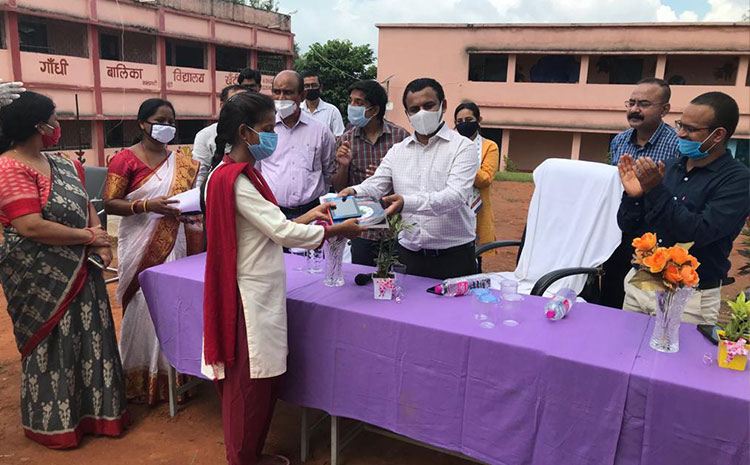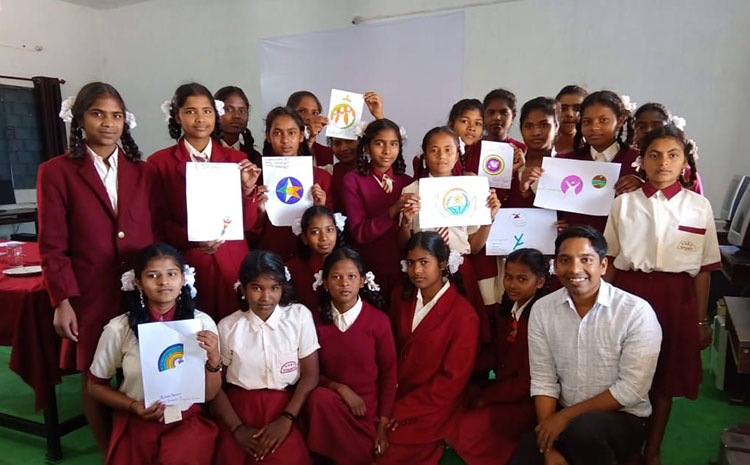The pan-India levels of secondary education have consistently improved since the 1970s. However, existing gender disparities are exacerbated by various social, cultural and economic factors. These result in concerning rates of drop-outs in Secondary Education and enrolments in Higher Educational Institutions. Pan-India, the female drop-out rates in Secondary School education stood at 17.86%. For Gross Enrolment Ratio in Undergraduate Programs (GER-U), the all India average for female students was at 26.4 %. However, for female students belonging to Scheduled Tribes, the drop-out rates increase to 26.96% and the GER-U falls to 16.5%.
Khunti District of Jharkhand, an Educationally Backward District, has a population predominantly belonging to Scheduled Tribes. It is thus faced with the dual challenge of keeping female students belonging to the Scheduled Tribe within the education system and providing them with the opportunities to enrol for higher education.
In assisting the District Administration of Khunti, Aspirational District Fellows Nikhil Tripathi and Divya Sharma sought to implement an intervention to address these challenges through the district-wide Sapno Ki Udaan programme which began in 2018. Its focus has been on improving education levels in the five Kasturba Gandhi Balika Vidyalaya’s (KGBV) in the district. These KGBVs are residential Secondary and Sr. Secondary Schools for female students from SC, ST, OBCs, and other minorities.
Identifying an Intervention:
In assessing the challenges faced by KGBVs, it was found that only one out of the five schools had science teachers for XI and XII grade. This resulted in only 8 students writing their XII Board Examination in 2020 with the Science stream, and for 2021, no student of the KGBVs has registered for this stream. Aware of limited career options and possibilities, the aspirations of the students have immense potential to be unlocked.

Above: The District Commissioner launching the Sapno ki Udaan programme
The larger structural challenge involves engaging more science teachers. However, until this challenge can be addressed, there is a need to implement a stop-gap intervention. In exploring methods to implement this, the engagement of an engineering and medical entrance examination coaching institution was assessed to be a viable option. Through such an institution, the KGBVs could momentarily address this shortage in science teachers, broaden the students’ options in higher education and eventually their career choices.
Process of Intervention:
The process of executing an intervention required the District Administration to engage a private coaching institution. A Request for Proposals was solicited for the intervention. Based on a comprehensive selection criteria, Vidya Mandir Classes was selected.
After a briefing on the district-specific requirements by the ADFs, the coaching institution established a five-step plan. First, career counselling of KGBV students was conducted. This allowed the students to know about options in and after Medicine and Engineering HEIs. Second, an aptitude assessment examination was conducted and the first batch of nearly 30 students was selected. Third, meetings with the selected students and their parents were conducted at regular intervals. Fourth, existing tablets in KGBVs were equipped with reading material provided by the coaching institution. This allowed the students to access information even after the classes.
In addition to the above intervention, the District Commissioner led efforts to revitalize the existing science laboratories through their refurbishment.
Resources Required:
To engage the coaching institute, the District Administration utilized Rs.5,00,000 from the Rs. 30,000,000 award for education by the NITI Aayog under the Sustainable Developmental Goals Externally Aided Programme along with Japan International Cooperation Agency (JICA).

Above: Aspirational District Fellows meeting KGBV students
Impact of the Intervention:
Given the intervention’s recent implementation, it will take time to assess the long-term impact. However, the short-term impact assessment has shown encouraging results.
Weekly tests conducted every Sunday by the coaching institute have shown a consistent improvement in the students’ grades. These tests have also allowed the teachers to identify students who require additional attention through extra classes.
The classes had initially enrolled 30 students and now have 35 students. This number is likely to increase as students from across the district are made aware of the initiative. Further, as a direct consequence of this initiative, nearly 40 students have enrolled for the Sciences stream for the year 2022.
Seeing the short-term success, it is expected that this intervention will help kindle aspirations and connect students with educational and eventually employment opportunities going ahead.


Leave a Reply